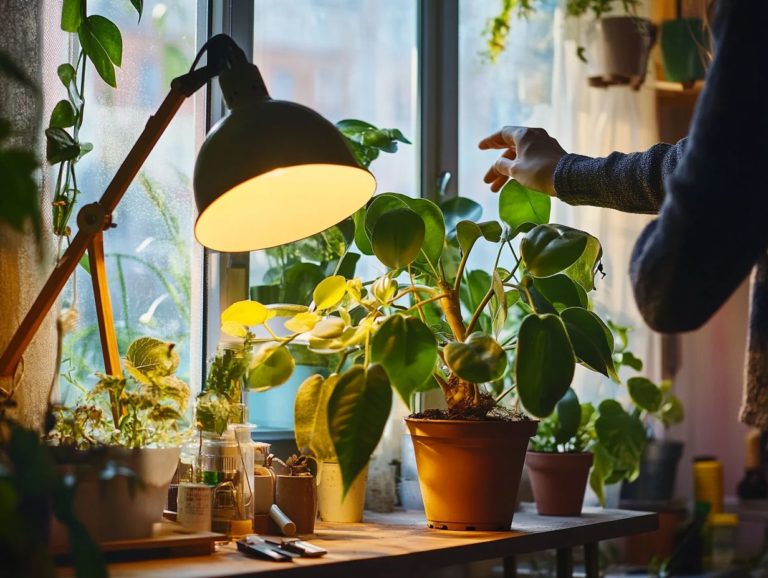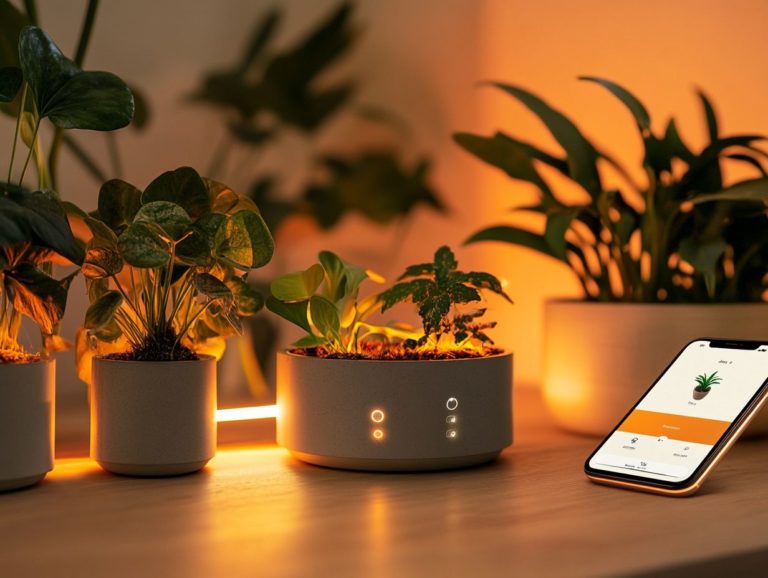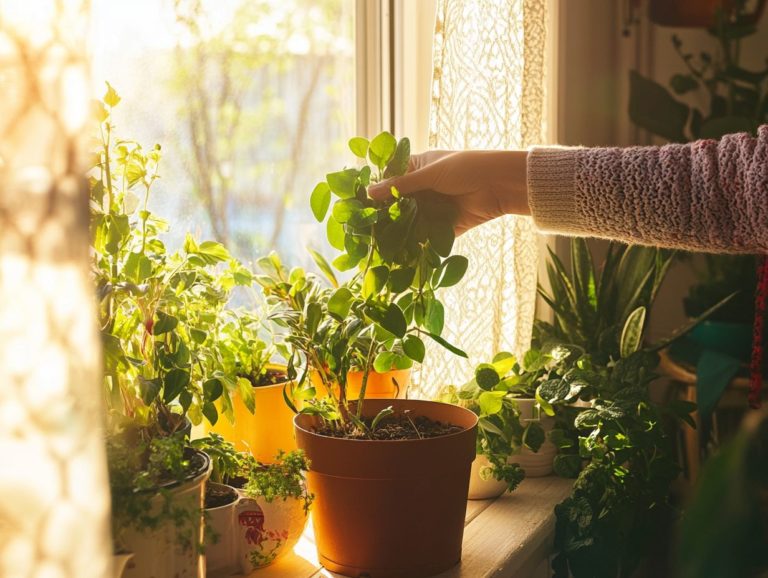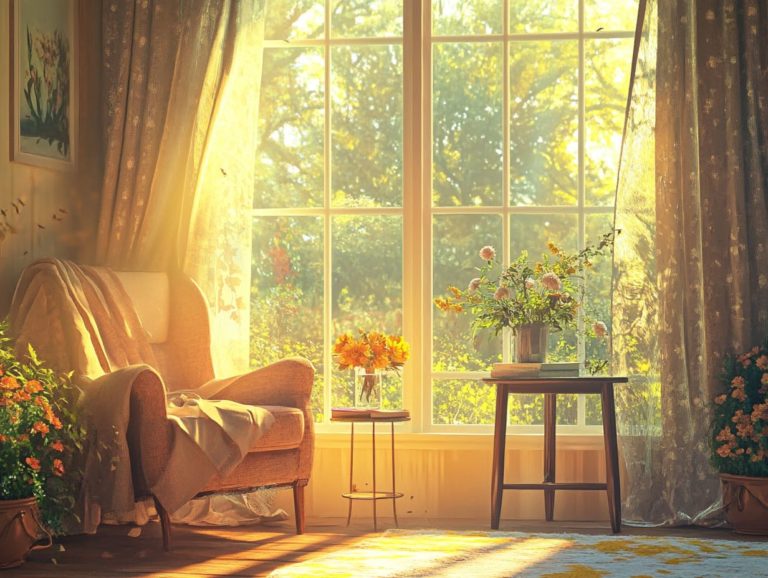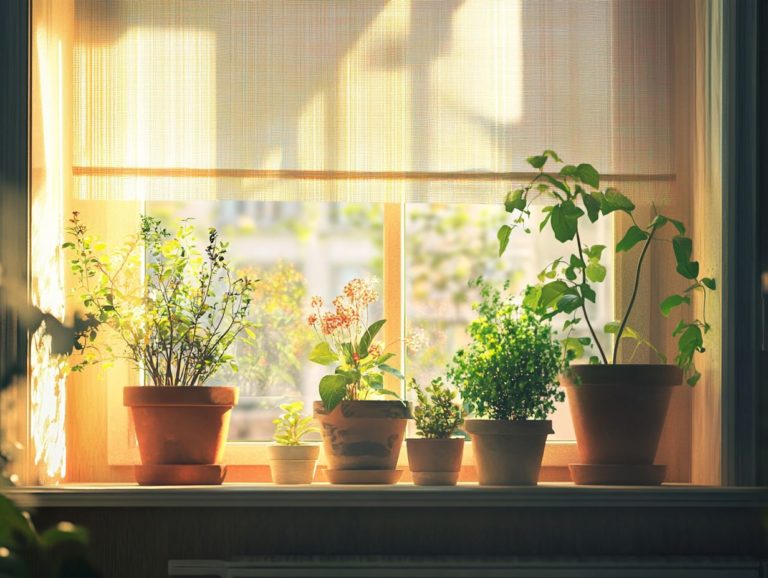Understanding Indirect vs Direct Light
Light significantly impacts your daily life, shaping everything from your mood to the ambiance of your surroundings.
This article explores two main types of light: direct and indirect. You ll find clear definitions and their pros and cons, guiding you in selecting the right option for your needs.
Whether you re a photographer, an interior designer, or simply someone looking to elevate your living environment, grasping the nuances of these light types will empower you to make well-informed choices.
Contents
- Key Takeaways:
- Direct Light vs Indirect Light
- Pros and Cons of Direct Light
- Pros and Cons of Indirect Light
- Choosing Between Direct and Indirect Light
- Frequently Asked Questions
- What are some examples of indirect light sources?
- When is direct light most commonly used in photography?
- What are the benefits of using indirect light in interior design?
- How can I control the amount of indirect and direct light in my images?
Key Takeaways:
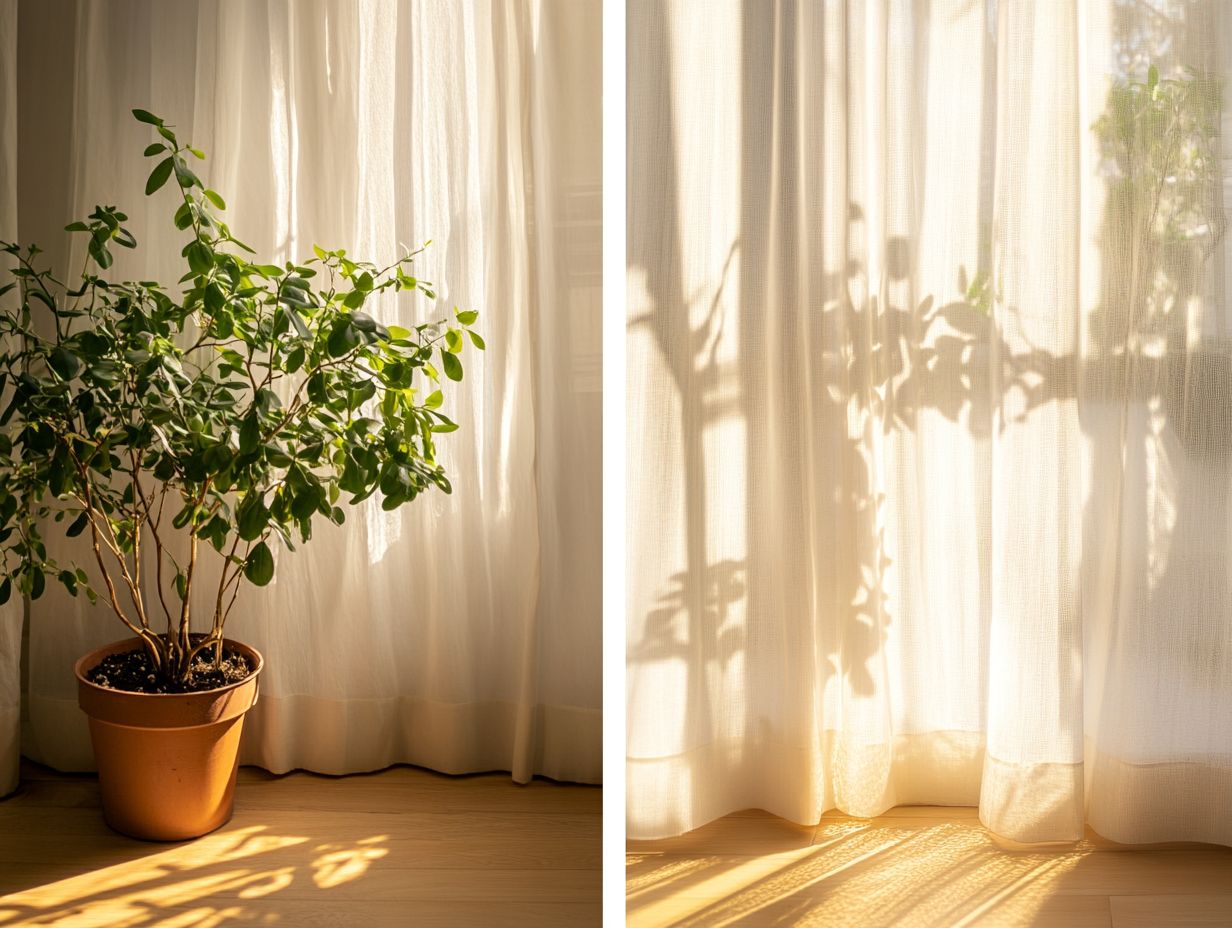
- Direct light travels in a straight line from its source to the object, while indirect light is redirected or diffused before reaching the object.
- Direct light provides strong, defined shadows and highlights, making it ideal for dramatic effects. However, it can also cause glare and harsh shadows, which may be undesirable in certain situations.
- Indirect light offers a softer, more diffused effect that creates a relaxed atmosphere. It helps reduce harsh shadows and glare but can be less powerful and may require more equipment for the desired effect.
What is Light?
Light is a crucial form of energy that fuels the growth and survival of your plants. It plays an essential role in photosynthesis, providing the energy needed by houseplants, cacti, and succulents to produce food and thrive.
Understanding light is essential for your indoor gardening success as it greatly affects plant health, growth patterns, and overall vitality.
Different types of light like direct, filtered, and low light affect various plants in unique ways. For example, philodendrons flourish in low to moderate light, making them ideal for dimly lit corners of your home.
On the other hand, pothos are adaptable champions, thriving even under artificial light. Each species comes with its own light requirements, and providing the right intensity and duration can dramatically boost their growth and photosynthesis efficiency.
Sunlight does more than brighten your space; it energizes the chlorophyll in your plants’ leaves, enabling them to convert carbon dioxide and water into glucose. This vital process supports their health and encourages lush foliage and vibrant blooms, transforming your indoor garden into a flourishing oasis.
Direct Light vs Indirect Light
Understanding the difference between direct light and indirect light is essential for cultivating thriving houseplants. Each type greatly affects the health and growth of your plants.
Direct light refers to unfiltered sunlight that bathes your plants in full intensity, while indirect light is softened, passing through buildings, trees, or curtains, altering its intensity and availability for photosynthesis.
Grasping these details empowers you to create the perfect environment for your green companions.
Defining Direct Light
Direct light refers to sunlight that reaches your plants without barriers, providing the maximum light intensity they need for optimal photosynthesis and growth. This type of light is essential for plants that thrive in bright environments.
Typically, plants like cacti and various succulents flourish under direct light. These resilient species store water and nutrients, enabling them to survive in arid conditions.
To promote healthy growth, these plants generally require at least six hours of direct sunlight each day. This intense light helps them develop robust characteristics, such as thick, waxy leaves that minimize water loss.
Positioning these plants in south or west-facing windows can maximize their exposure and enhance their development, ensuring they maintain vibrant colors and strong structures.
Defining Indirect Light
Indirect light is sunlight that has been gently filtered through obstacles like buildings, trees, or window treatments. This results in a more subdued lighting environment, perfect for many houseplants.
You ll find that this light can range from bright indirect light to low and medium indirect light, catering to various plant species.
Plants such as calatheas and dracaena thrive in these conditions, enjoying the gentle illumination that fosters healthy growth without the risk of leaf burn that can come with direct sunlight. Position them near north or east-facing windows to bask in consistent yet softer light.
Sheer curtains can diffuse sunlight, creating an ideal ambient setting for your plants to thrive while showcasing their vibrant foliage and unique patterns.
Pros and Cons of Direct Light
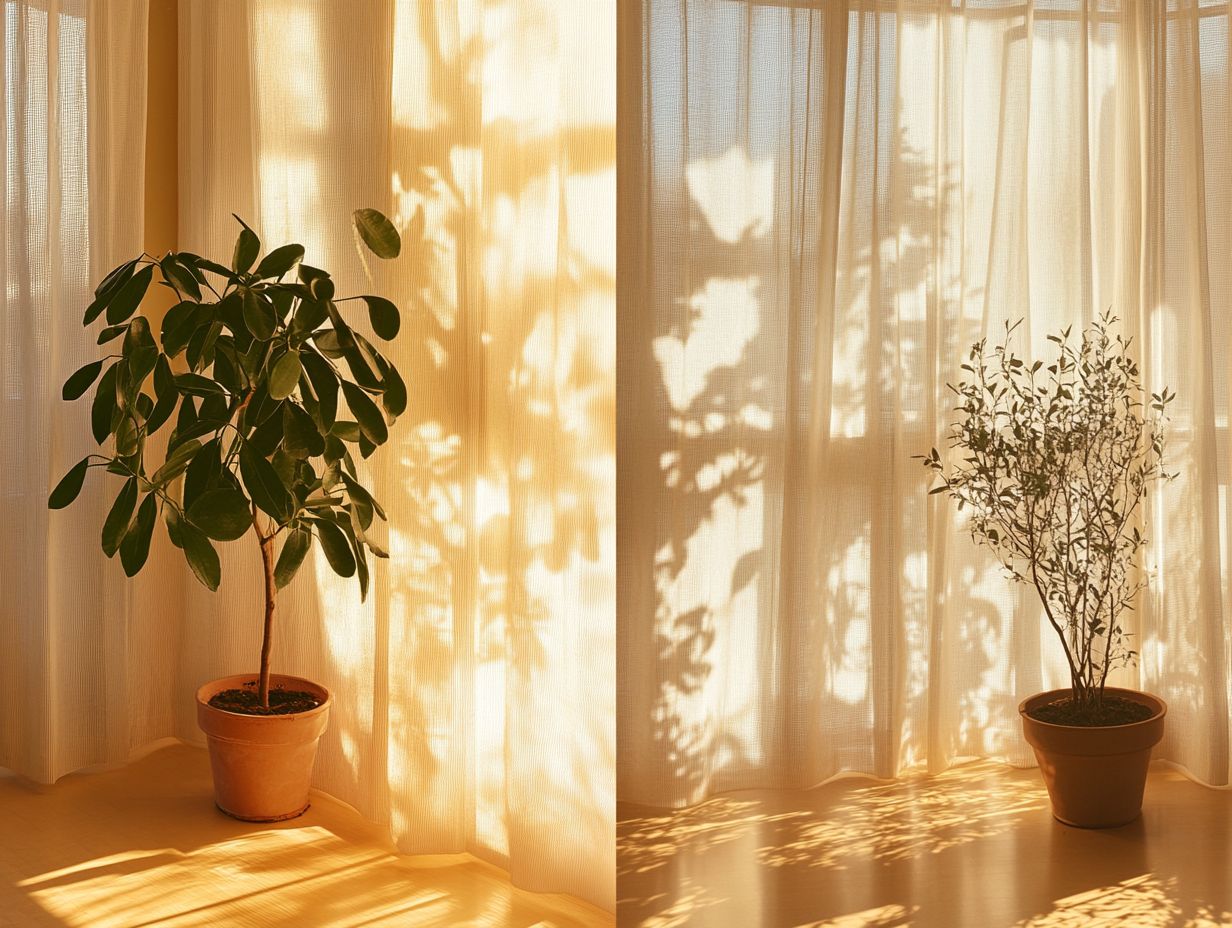
Direct light presents a mix of advantages and disadvantages for your houseplants, affecting their growth and health.
The strong intensity of direct sunlight is a boon for sun-loving plants that thrive on robust light for optimal photosynthesis. However, be vigilant, as excessive or prolonged exposure can lead to unsightly leaf burn.
Advantages of Direct Light
One primary benefit of direct light is its remarkable ability to enhance photosynthesis, allowing plants to efficiently produce energy and flourish. When you provide plants that crave direct sunlight with the light they need, you ll often witness robust growth and striking colors!
This is especially true for sun-loving species like tomatoes and sunflowers, which exhibit accelerated growth rates when soaking up full sun. The increased exposure leads to denser foliage and encourages abundant flowering.
Take succulents, for instance. These remarkable plants thrive under bright, direct sunlight, resulting in plump leaves and vibrant hues. Strong sunlight serves as a natural deterrent to pests and diseases, boosting the vitality and resilience of your garden.
Disadvantages of Direct Light
Despite its many advantages, direct light can pose challenges for sensitive houseplants that might experience leaf burn and dehydration from excessive intensity. Position your plants wisely to keep them healthy!
Some tropical species thrive in indirect light, enjoying warmth without the risk of scorching. Consider using sheer curtains to diffuse harsh sunlight or rotating them regularly for even exposure.
Monitoring humidity levels can help alleviate stress, as many plants favor a moist environment. By paying close attention to the specific needs of each variety, you can cultivate a flourishing indoor garden that effectively wards off the dangers of direct sun exposure.
Pros and Cons of Indirect Light
Indirect light offers a unique blend of advantages and disadvantages, making it an excellent choice for various houseplants that thrive in softer, filtered light conditions.
While this gentle lighting can help prevent leaf burn and promote healthy growth, it may also restrict the growth potential of certain light-loving species. Choosing the right balance is key to nurturing your plants effectively.
In conclusion, understanding the nuances of light conditions can greatly enhance your indoor gardening experience. By tailoring your approach to the specific needs of your plants, you can create a thriving indoor oasis!
Advantages of Indirect Light
One significant advantage of indirect light is that it minimizes the risk of leaf burn. This allows sensitive plants to thrive without the stress of excessive sunlight. This type of lighting is generally more forgiving for a variety of houseplants, promoting healthier foliage and overall plant vitality.
For instance, species like pothos and philodendrons flourish under these conditions. They proudly display their vibrant green leaves while avoiding the common pitfalls of harsh, direct sunlight. By filtering the light, they can make food through sunlight effectively without suffering from scorching heat.
Understanding your plants’ specific light needs is essential. While some may tolerate low light, others crave brighter, indirect light to truly shine. Striking the right balance fosters lush growth and enhances the aesthetic appeal of your indoor spaces, creating a delightful environment for both you and your leafy companions.
Disadvantages of Indirect Light
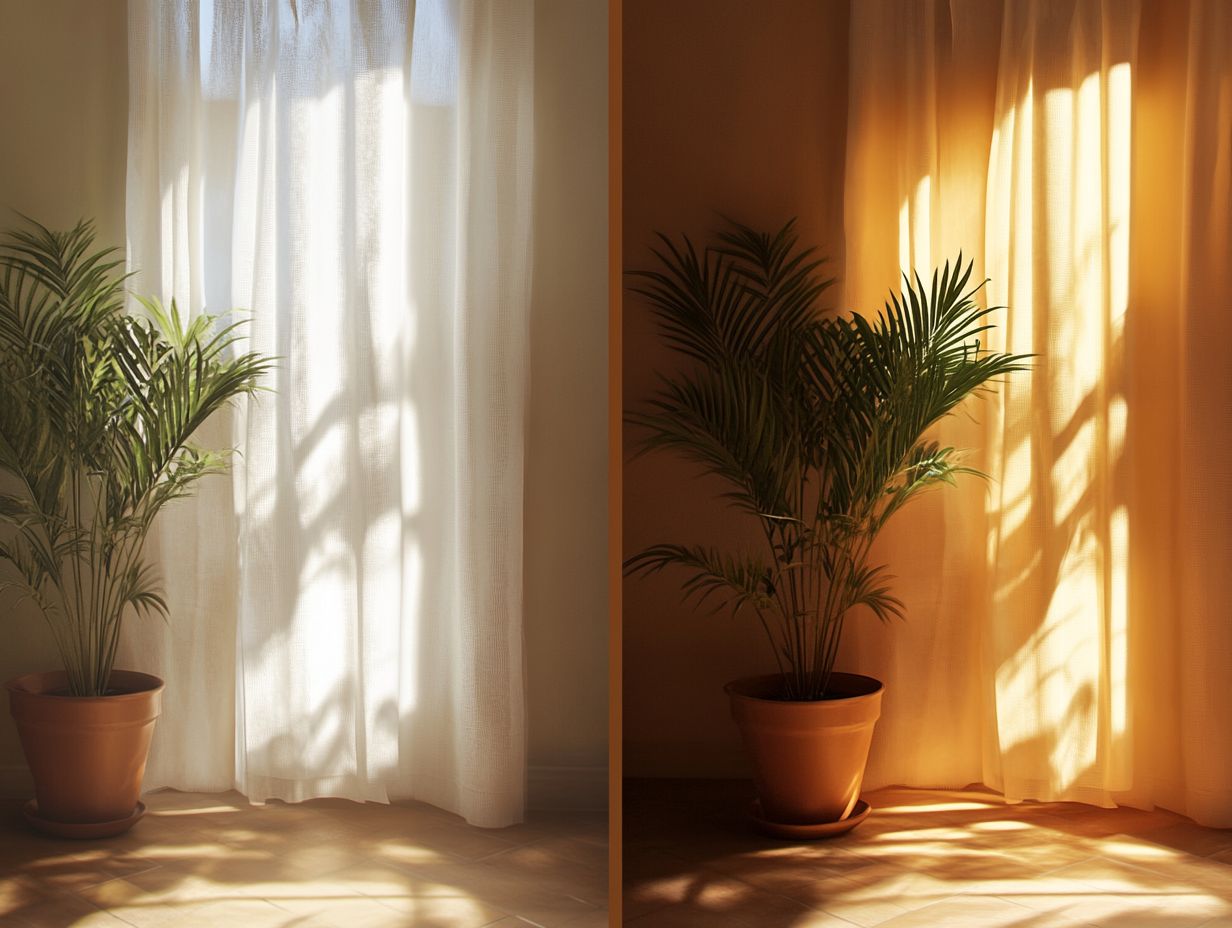
While indirect light may be cozy for many houseplants, it can also bring about certain drawbacks, especially for sun-loving species that thrive in direct sunlight. Insufficient light levels can stifle photosynthesis and hinder their overall development.
For sunlight-hungry varieties like succulents and specific tropical species, a lack of adequate sunlight can lead to weak stems, elongated growth patterns, and lackluster flowering. Know your plants’ light needs to keep them healthy and vibrant. Don’t let your plants struggle; watch them flourish instead!
Crafting an environment that mimics their natural habitats is key. Consider incorporating grow lights or placing them in brighter areas of your home. This simple adjustment can significantly promote robust growth and vitality.
Choosing Between Direct and Indirect Light
Selecting between direct and indirect light is a crucial decision impacting the health and longevity of your houseplants. Each species has its own light requirements, influenced by their natural habitats.
To cultivate an optimal growing environment, consider factors like window orientations, seasonal changes, and the specific needs of your plants. Evaluating these elements will put your greenery on the path to thriving.
Factors to Consider
Light Needs
When deciding between direct and indirect light for your houseplants, several key factors come into play. You’ll want to consider the specific light requirements of your plants and the orientation of your windows.
Window Orientation
Environmental factors like cloud cover or indoor obstructions can significantly impact how light reaches your plants. By understanding these elements, you can create an environment that fosters optimal growth and well-being.
Environmental Elements
Different plant species have adapted to various light conditions over time. Some flourish in low-light environments, while others bask in bright sunlight. Additionally, factors like room temperature and humidity interact with light levels. Evaluating these variables will help you craft a thriving indoor garden tailored to your unique space.
Frequently Asked Questions
What is the difference between indirect and direct light?
Indirect light refers to light that has been reflected or diffused before reaching the subject, while direct light reaches the subject without alteration.
How does indirect light affect photography?
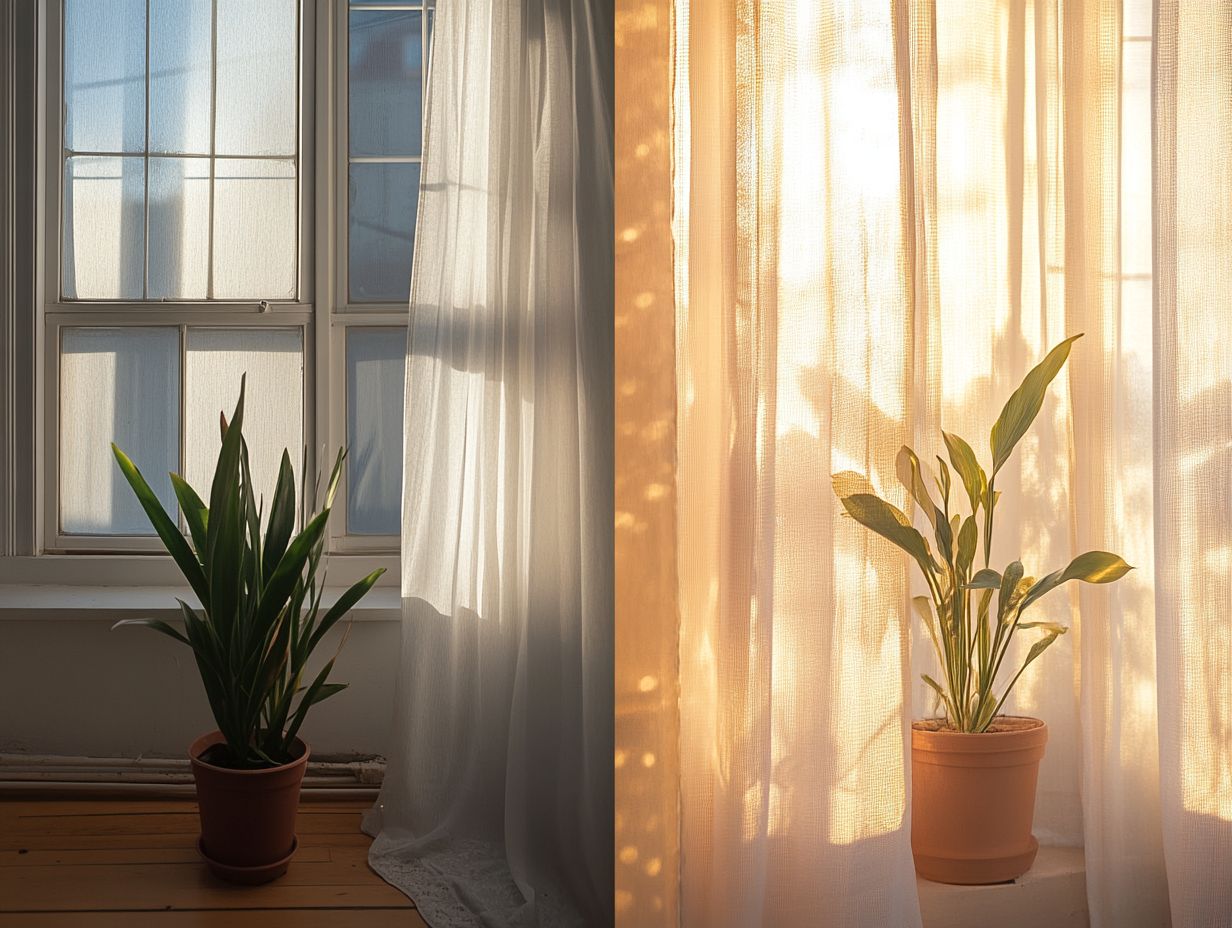
Indirect light creates soft, even lighting ideal for portraits and still life photography. It reduces harsh shadows and highlights, resulting in a more balanced and pleasing image.
If you have more questions about light conditions for your plants, feel free to ask or share your experiences! We love to hear from fellow plant enthusiasts.
What are some examples of indirect light sources?
Examples of indirect light sources include natural light from a cloudy sky and light that reflects off walls or objects.
Artificial lighting that is diffused also counts.
When is direct light most commonly used in photography?
Direct light is popular in outdoor photography.
It’s especially effective for capturing landscapes and sports, creating striking shadows and highlights.
What are the benefits of using indirect light in interior design?
Indirect light creates a cozy atmosphere, making spaces feel larger and airier.
It also reduces glare and eye strain.
How can I control the amount of indirect and direct light in my images?
You can adjust your camera settings to control light.
Utilize diffusers or reflectors and position your subject effectively for the best results.

